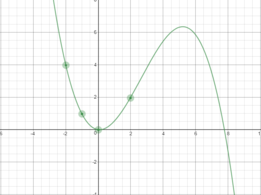Data Science
Over Fitting / Under Fitting
When using machine learning, there are many ways to go wrong. Some of the most common issues in machine learning are overfitting and underfitting. To understand these concepts, let’s imagine a machine learning model that is trying to learn to classify numbers, and has access to a training set of data and a testing set of data.
Overfitting
A model suffers from Overfitting when it has learned too much
from the training data, and does not perform well in practice as
a result. This is usually caused by the model having too much
exposure to the training data. For the number classification
example, if the model is overfit in this way, it may be picking
up on tiny details that are misleading, like stray marks as an
indication of a specific number.
The estimate looks pretty good when you look at the middle of
the graph, but the edges have large error. In practice, this
error isn’t always at edge cases and can pop up anywhere. The
noise in training can cause error as seen in the graph below.

Underfitting
A model suffers from Underfitting when it
has not learned enough from the training data, and does not
perform well in practice as a result. As a direct contrast to
the previous idea, this issue is caused by not letting the model
learn enough from training data. In the number classification
example, if the training set is too small or the model has not
had enough attempts to learn from it, then it will not be able
to pick out key features of the numbers.
The issue with this estimate is clear to the human eye, the
model should be nonlinear, and is instead just a simple line. In
machine learning, this could be a result of underfitting, the
model has not had enough exposure to training data to adapt to
it, and is currently in a simple state.